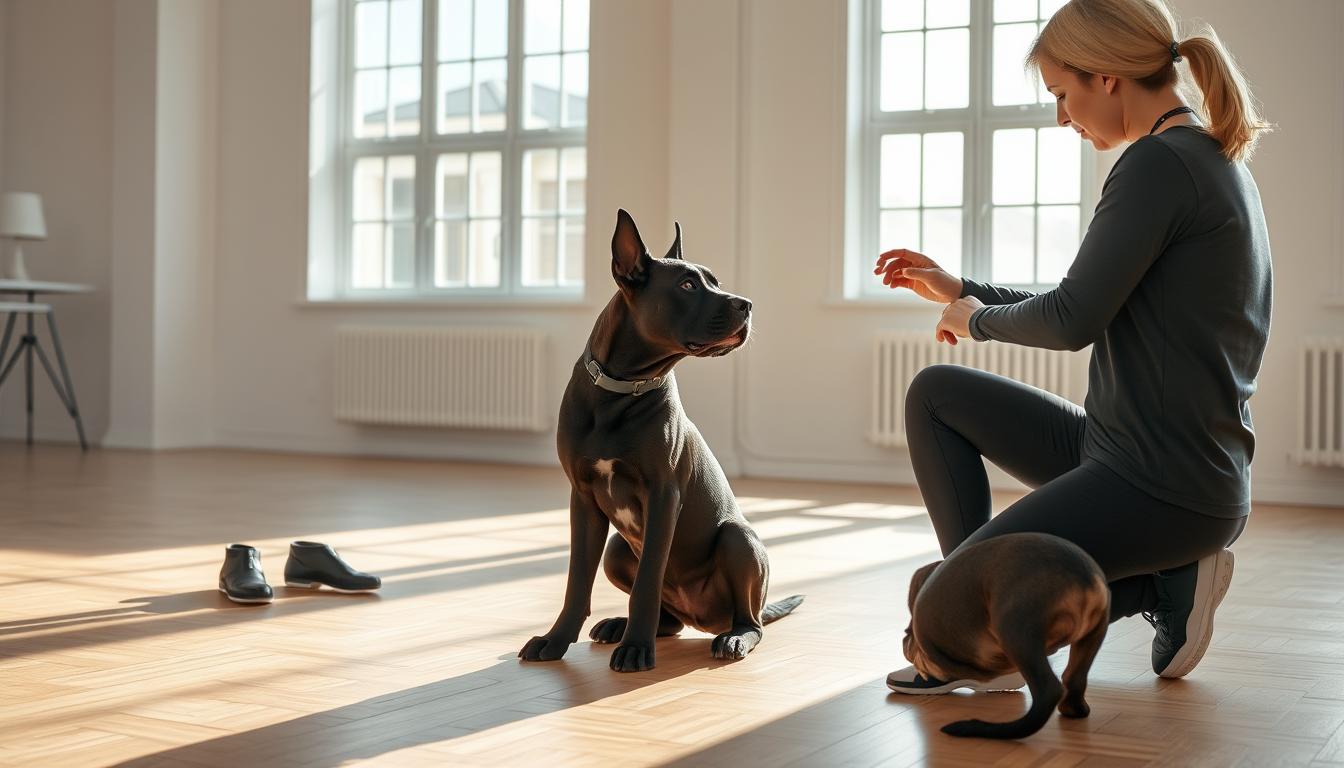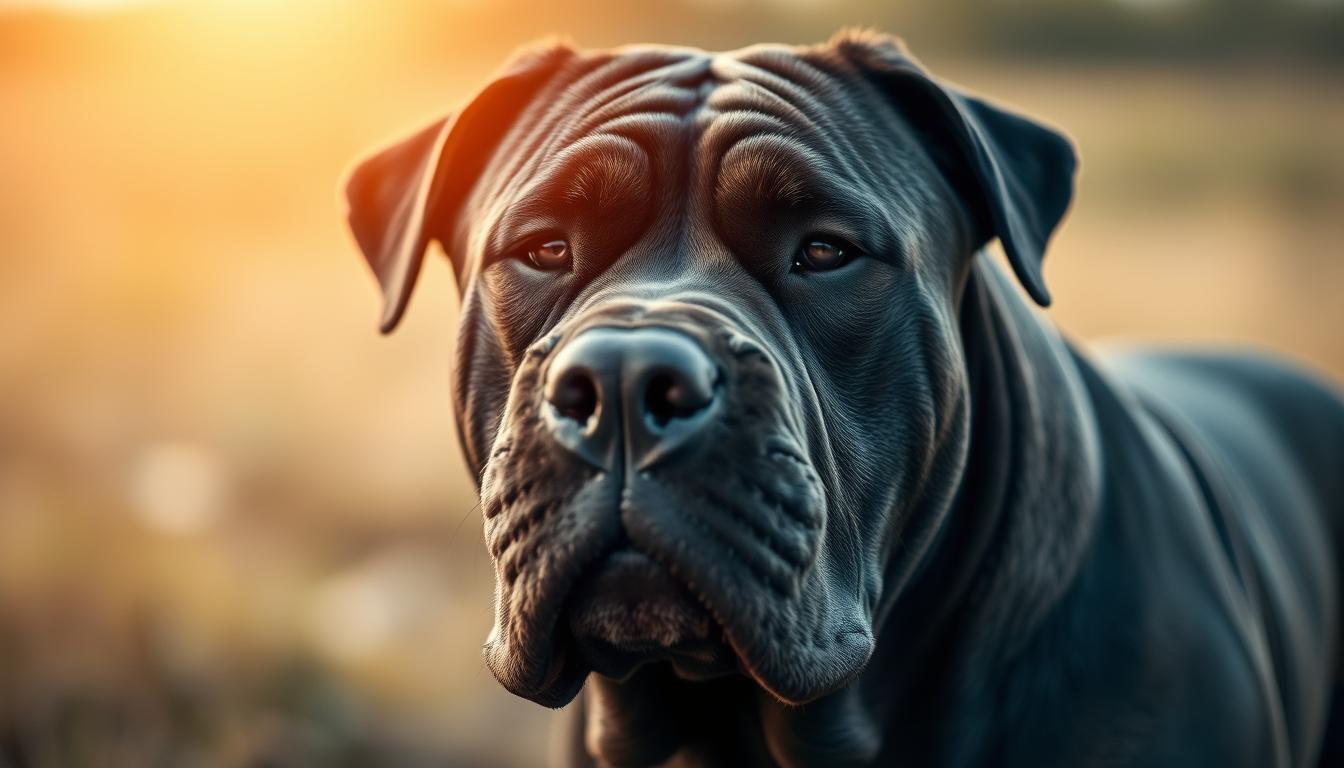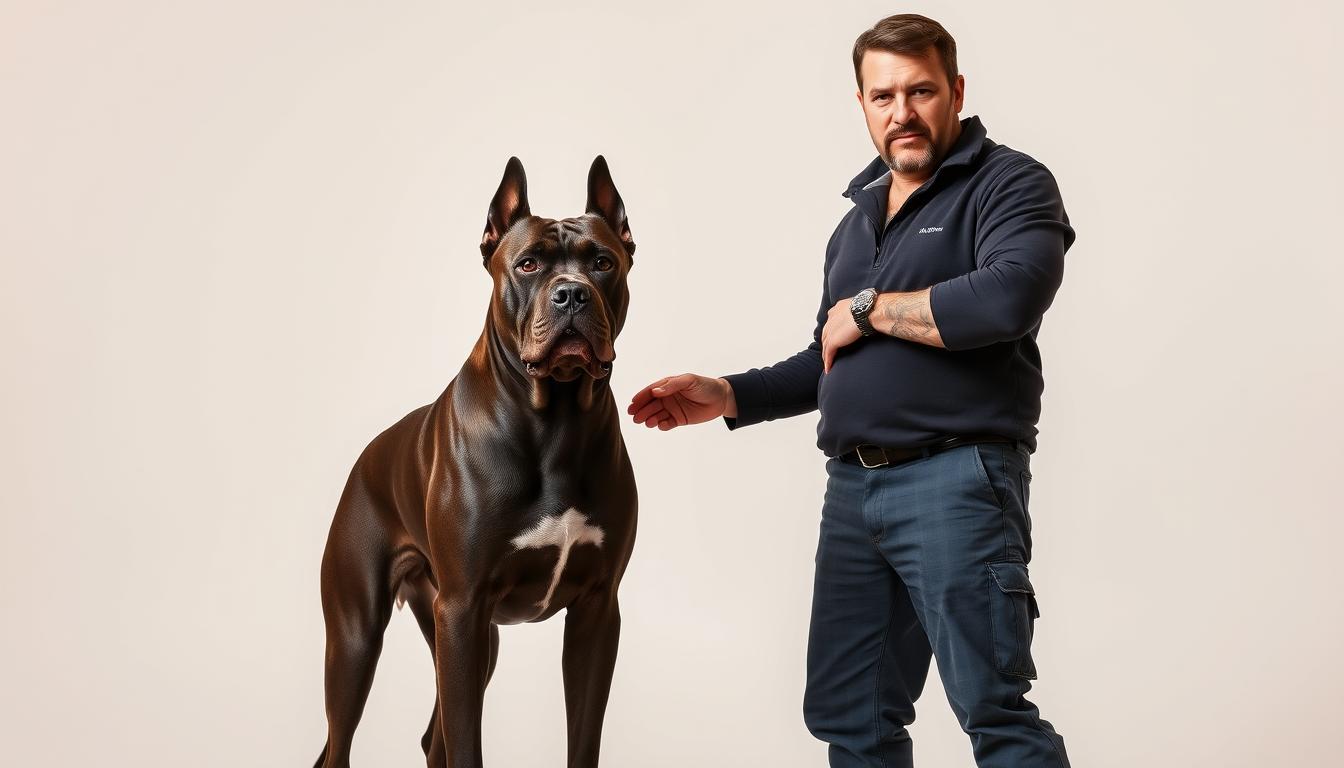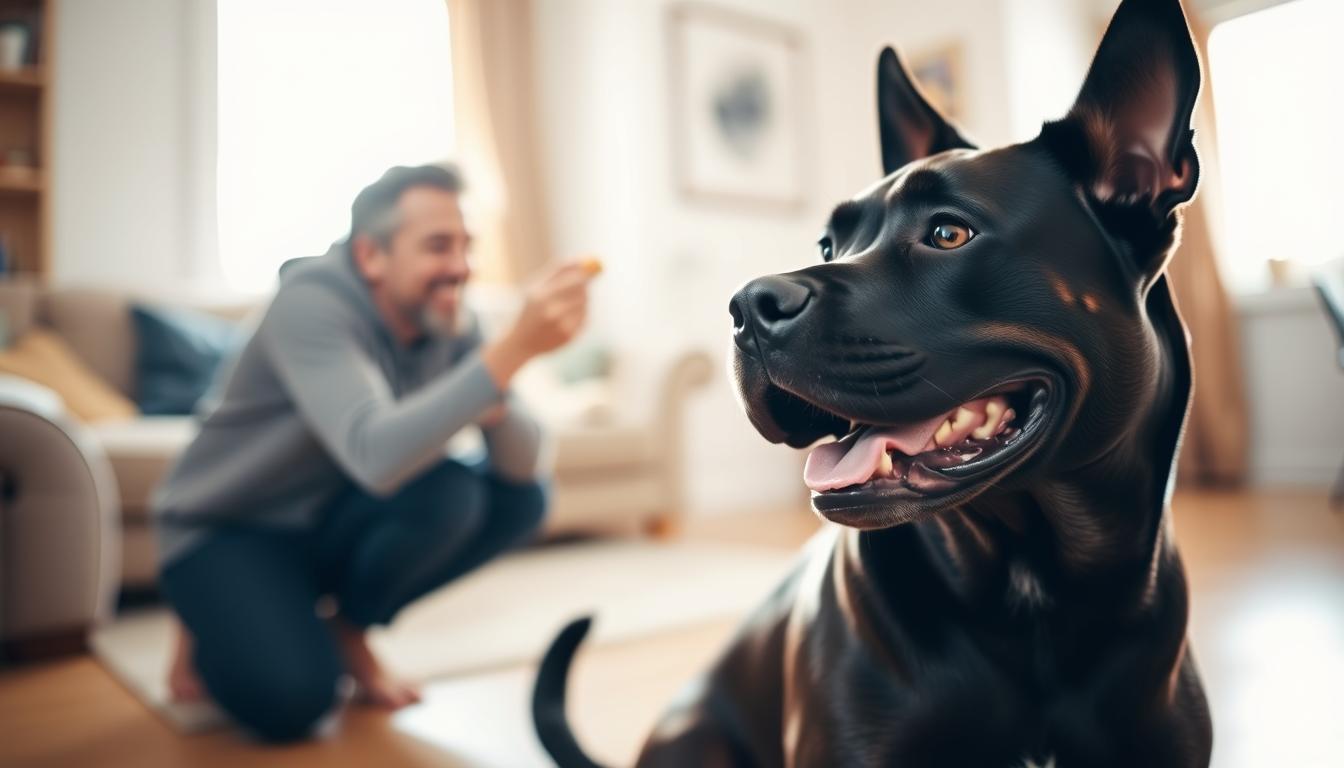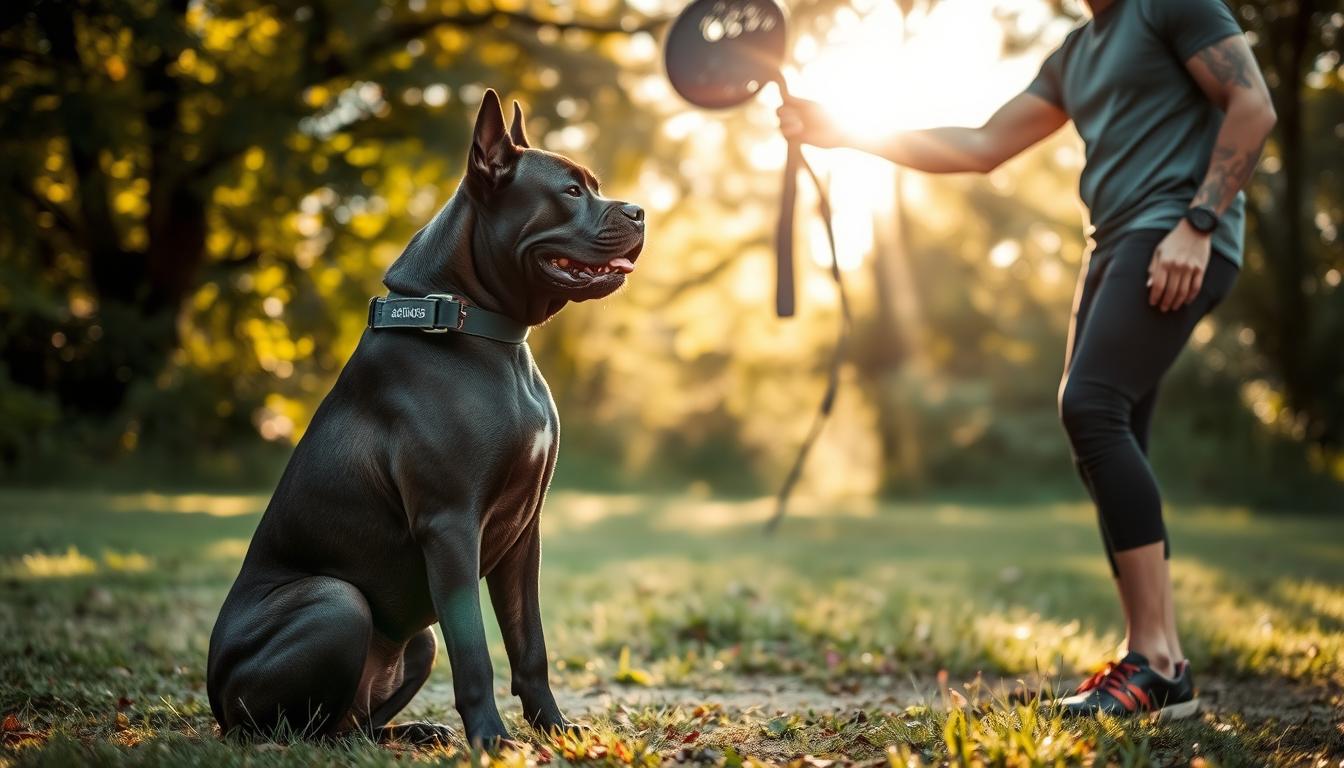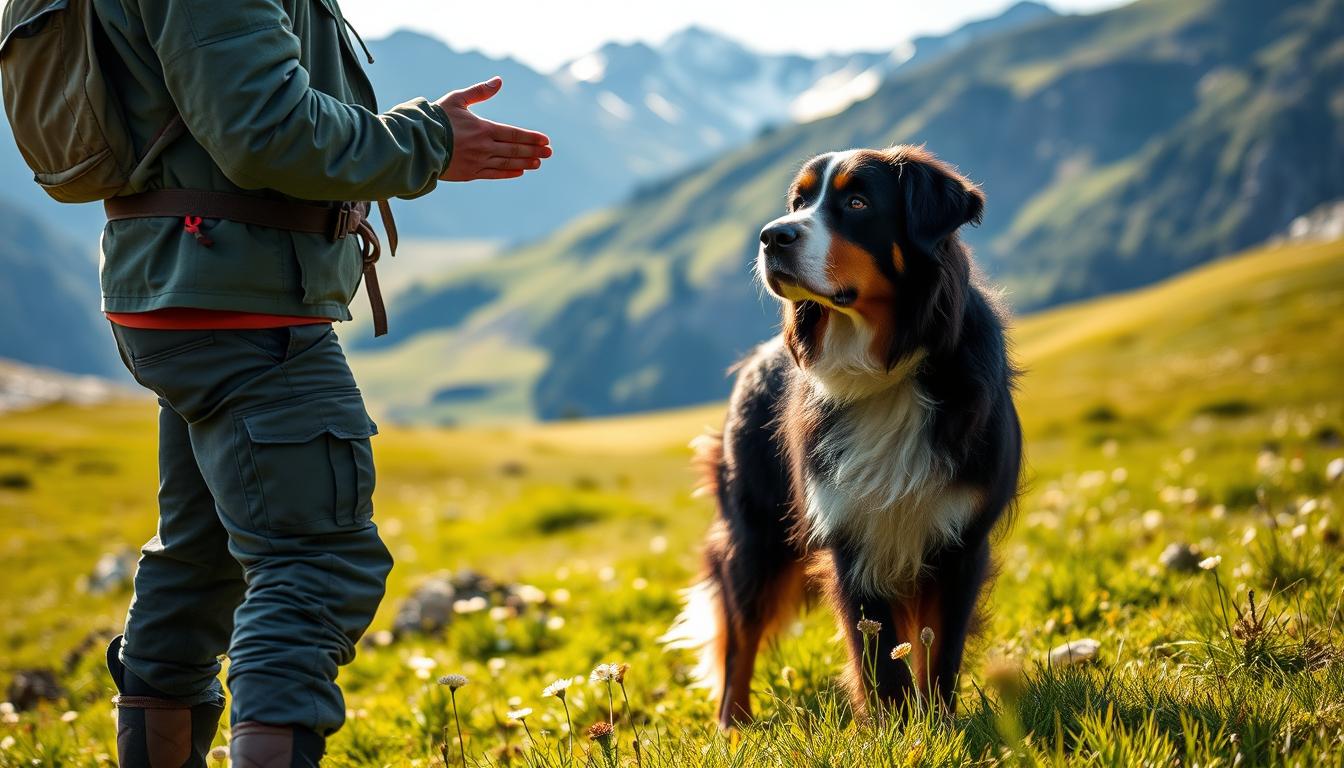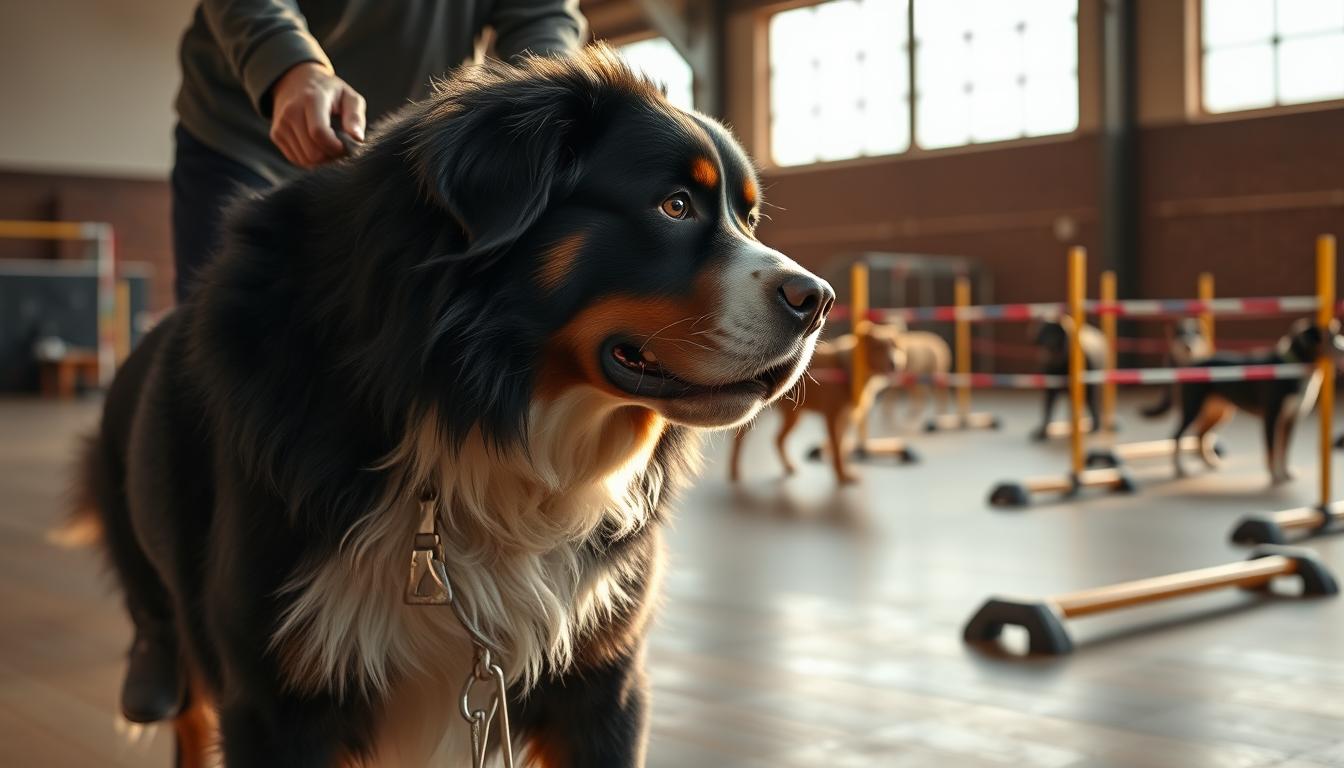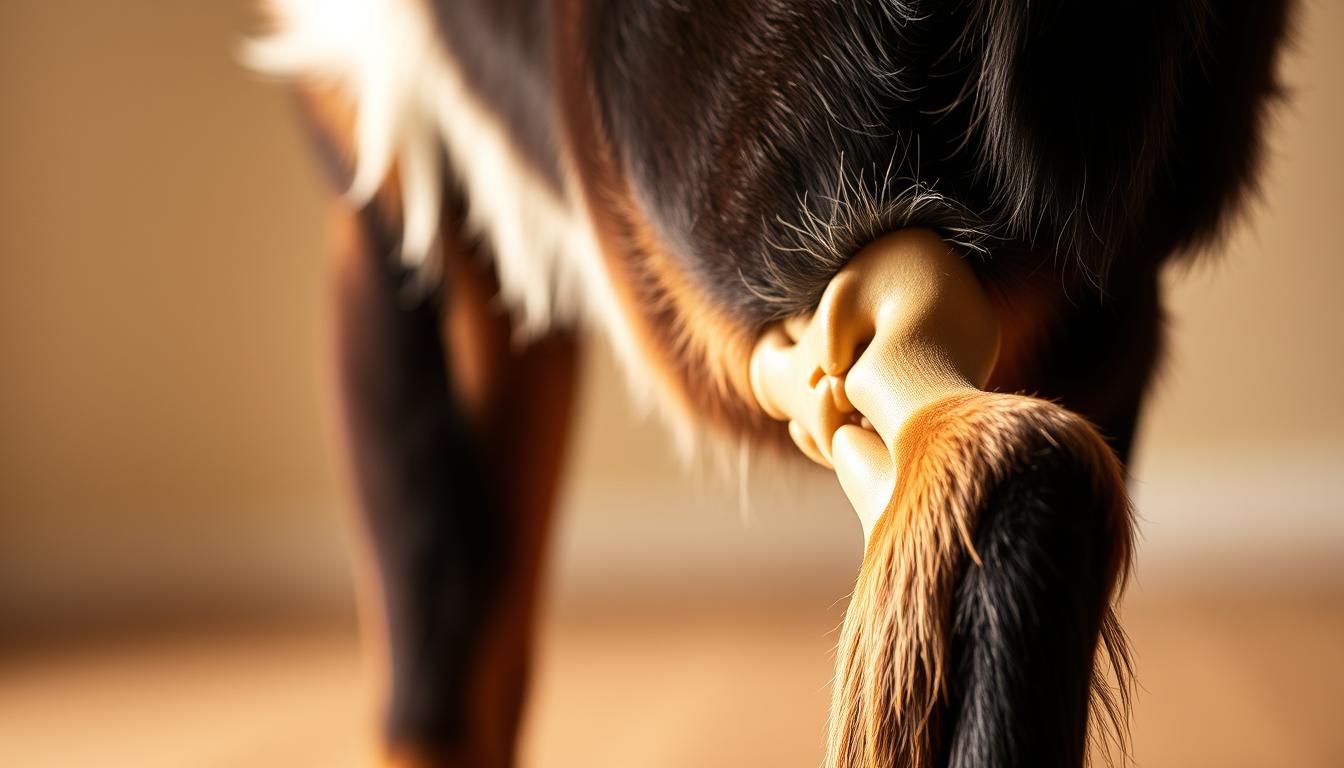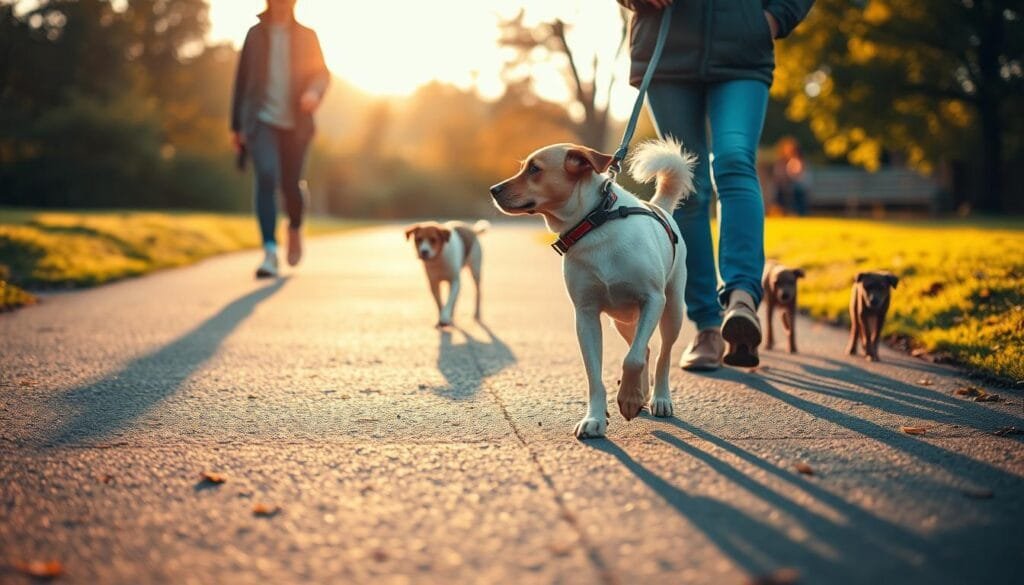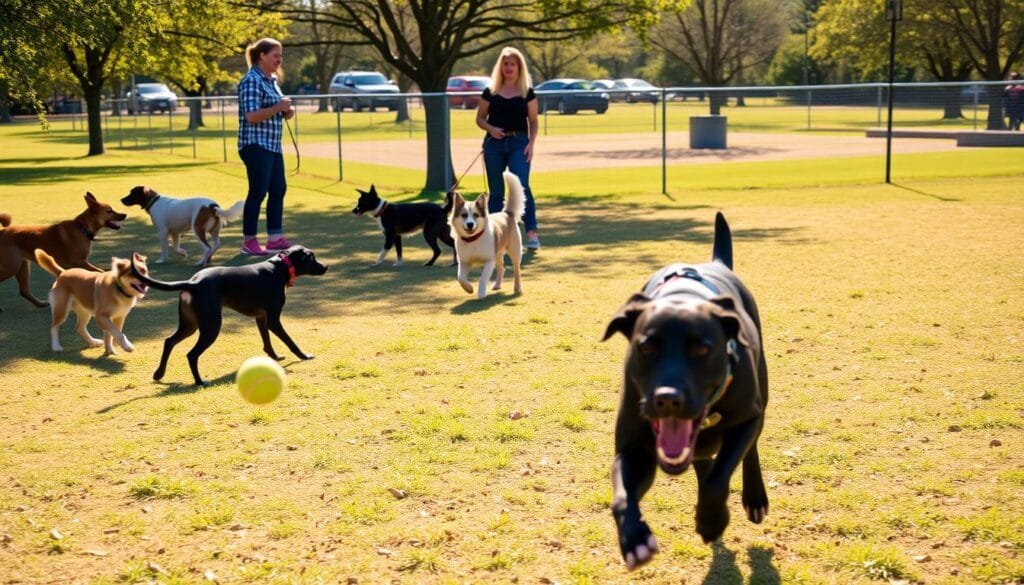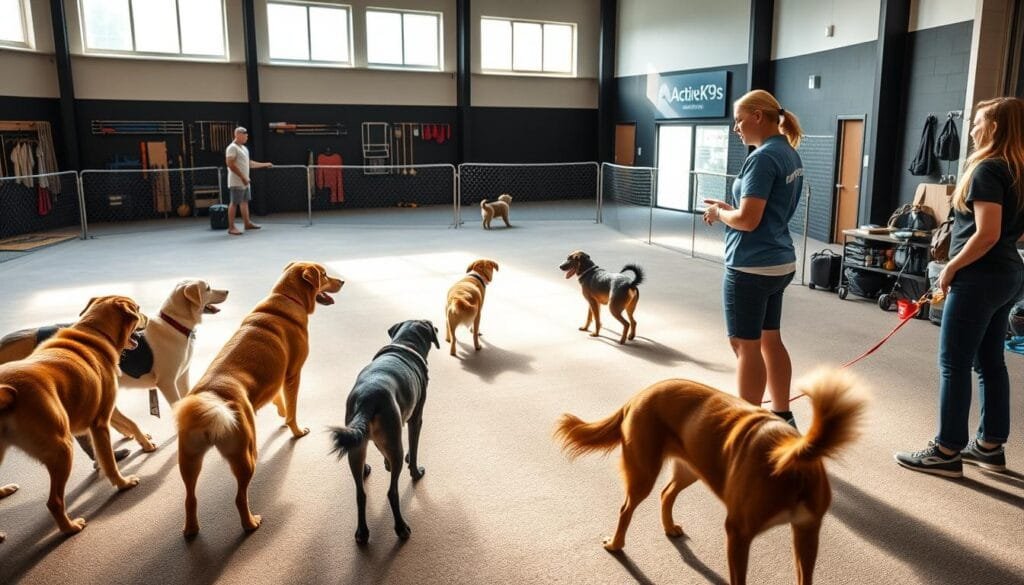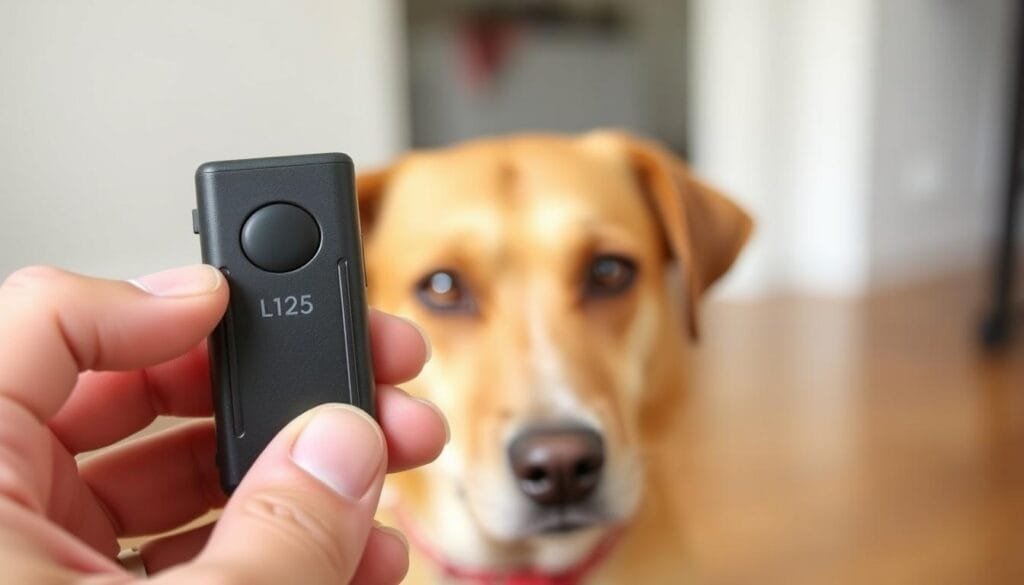Are you ready to transform your powerful Rottweiler into a perfectly trained companion? This isn’t just about commands—it’s about building a lifelong bond. Rottweiler puppy training is more than just teaching tricks; it’s about creating a deep connection.
Rottweilers are remarkable dogs with incredible potential. Our comprehensive training approach focuses on their unique temperament. We aim to channel their intelligence and foster a harmonious relationship between you and your furry friend.
In Ireland, we understand that these magnificent dogs need specialised training techniques. Rothweiler training is an art form that requires patience, consistency, and a deep understanding of the breed’s inherent characteristics.
Whether you’re a first-time Rottweiler owner or an experienced handler, this guide offers expert insights. You’ll learn effective rottweiler puppy training strategies that work.
Key Takeaways
- Understand the unique characteristics of Rottweilers
- Learn specialised training techniques
- Build trust and respect with your dog
- Develop consistent training approaches
- Recognise the importance of early socialisation
Understanding Your Rottweiler Training Heritage and Temperament
Exploring the history of Rottweilers uncovers a captivating narrative of evolution and legacy. These dogs, with their powerful build, carry a rich heritage. This heritage influences their character, making Rothweiler training both demanding and fulfilling.
Ancient Roman Origins
The Rottweiler’s history traces back to the Roman legions, where they were used as strong cattle drivers. These dogs, with their intelligence and strength, accompanied Roman soldiers across Europe. Their main tasks were herding and guarding livestock, skills still vital in modern rottweiler training.
Modern Working Dog Characteristics
Today, Rottweilers retain their ancestral work ethic. Their physical and mental prowess makes them outstanding working dogs. They excel in various roles, including:
- Police and military service
- Search and rescue operations
- Disability assistance
- Personal protection
Natural Guardian Instincts
Rottweilers have a natural protective instinct, a trait from their historical past. Grasping these instincts is key to effective Rothweiler training. It enables owners to harness their dog’s innate abilities positively and opions for rottweiler protection training.
| Characteristic |
Description |
| Protective Instinct |
High – Will defend family and territory |
| Intelligence Level |
Very High – Quick learners |
| Exercise Needs |
2 hours daily recommended |
By acknowledging and honouring their unique heritage, owners can forge deeper bonds with their Rottweilers. This transforms training from a mere task into a rewarding journey.
Essential Training Equipment and Setup
https://www.youtube.com/watch?v=GYT4ZDjtzZw
Starting your Rottweiler’s training journey requires selecting the right equipment and setting up an ideal training space. Investing in top-notch gear is crucial for effective learning and strengthening your bond. It’s the first step towards a successful training experience.
Essential Training Equipment Checklist
- Harness and Collar: The Ruffwear Front Range harness is designed for control during walks. It features foam-padded strips for comfort and a chest and belly design for ease.
- Training Lead: Max and Neo Dog Gear’s double handle leash is durable and versatile, perfect for Rottweiler training.
- Interactive Toys:
- KONG Classic: This ultra-durable rubber toy has unpredictable bounce.
- Chuckit! Ultra Ball: Ideal for extended fetch games.
- Training Treats: Milk-Bone Soft & Chewy treats are made with real chicken breast.
Creating Your Training Environment
For successful training, you need a quiet, distraction-free space. Choose a spot in your home with minimal interruptions. Consistency in your training location helps your Rottweiler puppy focus and learn better, for rottweiler leash training and general obedience.
Additional Helpful Equipment
- FURminator deShedding Tool for grooming
- Comfortable dog bed for rest periods
- Treat pouch for convenient reward delivery
Quality equipment is essential for successful Rottweiler puppy training. The right tools make training more efficient and enhance the learning experience for both you and your furry friend.
Starting Early: Puppy Training Foundations
Rottweiler puppy training is a critical journey that begins in the earliest weeks of your pup’s life. These initial months are pivotal for establishing a strong foundation in obedience training for Rottweilers. This sets the stage for a well-behaved companion.
Our expert approach recognises that Rottweiler puppies are most receptive to learning between 6 weeks and 6 months of age. This developmental window is crucial for introducing basic commands and socialisation techniques.
Critical Development Periods
Understanding your Rottweiler’s developmental stages is key to effective training. Experts recommend:
- Daily handling from birth to promote early socialisation
- Careful interactions during the first seven to eight weeks
- Exposure to various environments and stimuli
Basic Command Introduction
When introducing obedience training for Rottweilers, keep sessions short and engaging. We recommend:
- Five-minute training sessions
- Using the Push, Drop, Stick method to track progress
- Aiming for 5 out of 5 correct responses
House Training Basics
Successful Rottweiler puppy training includes establishing consistent bathroom routines. Key strategies include:
- Creating a designated bathroom area by five weeks
- Crate training to support overnight bladder control
- Consistent positive reinforcement
Remember, patience and consistency are your greatest tools in raising a well-trained Rottweiler.
Rothweiler Training: Core Principles and Methods

Rothweiler training requires a balanced approach, blending understanding, respect, and clear communication. These powerful dogs excel with intelligent training methods that utilise their natural strengths and cognitive abilities.
Effective obedience training for Rottweilers hinges on several key principles:
- Positive reinforcement as the primary training technique
- Consistent, short training sessions
- Understanding the breed’s unique psychological needs
- Establishing clear communication channels
Our training philosophy centres on building trust and mutual respect. Rottweilers, being highly intelligent, respond best to methods that challenge their minds gently.
The key to successful Rothweiler training is understanding their psychology, not dominating their spirit.
Experts advise starting training early, ideally between 8-10 weeks of age. Short, daily sessions of 10-15 minutes are most effective. High-value treats and enthusiastic praise motivate these intelligent canines during learning phases.
Positive reinforcement techniques excel with Rottweilers. Rewarding desired behaviours fosters a collaborative training environment, strengthening the bond between dog and owner.
- Use treats strategically
- Provide immediate positive feedback
- Maintain consistent training routines
- Adapt techniques to individual dog’s personality
Remember, each Rottweiler is unique. Tailoring your obedience training approach ensures the best possible outcome for both you and your loyal companion.
Establishing Leadership and Trust
Rothweiler training focuses on building a strong, respectful bond between you and your Rottweiler. It’s essential to understand pack dynamics for effective rottweiler behaviour modification. These powerful dogs need clear guidance and consistent leadership to thrive.
Pack Mentality Understanding
Rottweilers are naturally driven by pack instincts. They seek a structured environment with defined roles. In your home, you must establish yourself as the calm, confident leader. This approach doesn’t involve aggressive tactics but rather consistent, gentle authority.
- Maintain calm and assertive energy during interactions
- Set clear boundaries from the beginning
- Use positive reinforcement techniques
- Avoid physical punishment or harsh corrections
Consistent Boundary Setting
Successful Rothweiler training relies on setting and maintaining clear rules. Rottweilers thrive in structured environments. By creating predictable routines and expectations, you’ll help your dog feel secure and understand their place in the family hierarchy.
Building Mutual Respect
Rottweiler behaviour modification is most effective when based on mutual trust. Consistent training sessions, lasting 10-15 minutes and conducted several times daily, reinforce desired behaviors. Use high-value treats and enthusiastic verbal praise to encourage positive interactions.
Remember, leadership is about guidance, not dominance. Your Rottweiler should view you as a reliable, trustworthy companion.
Professional training support is invaluable during critical development periods. It helps navigate the nuanced path of establishing leadership with your intelligent and loyal Rottweiler.
Socialisation Techniques for Rottweilers
Rottweiler socialisation techniques are vital for raising a confident and well-adjusted pet. The critical period for socialisation is between 8 and 16 weeks. This is a key time for positive experiences and learning.
Effective rottweiler puppy training starts with understanding the importance of controlled social interactions. Our method involves creating positive, structured environments for healthy development.
- Introduce puppies to diverse people and environments
- Use positive reinforcement with treats and praise
- Conduct supervised puppy class interactions
- Practice gradual exposure to different sounds and textures
Controlled puppy classes are a great way for Rottweilers to safely interact with other dogs. Brief, supervised meetings in neutral territories can significantly enhance social skills and confidence.
| Socialisation Stage |
Key Objectives |
Recommended Techniques |
| 8-12 Weeks |
Initial Social Exposure |
Gentle introductions, treat rewards |
| 12-16 Weeks |
Diverse Environment Exposure |
Varied sound/texture experiences |
| 4-6 Months |
Reinforcing Social Skills |
Structured group interactions |
Desensitisation techniques help Rottweilers manage fear-inducing stimuli by gradually increasing exposure intensity. Remember, a single negative experience can significantly impact their social development.
Consistent, positive interactions are the cornerstone of successful Rottweiler socialisation.
By implementing these rottweiler socialisation techniques, you’ll support your puppy’s journey towards becoming a confident, well-adjusted adult dog. They will be ready to engage positively with the world.
Advanced Obedience Training
Advancing your Rottweiler’s obedience training demands dedication, patience, and a strategic approach. These intelligent dogs excel in mental challenges and structured learning environments. With the right obedience training, your powerful companion can become a disciplined and responsive partner.
Rottweiler recall training is essential as your dog moves beyond basic commands. Our professional training methods aim to develop reliable off-leash skills. This ensures your dog’s safety and your peace of mind.
Complex Commands Mastery
Advanced training introduces sophisticated commands that challenge your Rottweiler’s cognitive abilities. These skills include:
- Multi-step directional commands
- Precision positioning
- Silent hand signal responses
- Extended duration stays
Distance Control Techniques
Distance control is a critical aspect of advanced obedience training for Rottweilers. We use proven methods to keep your dog focused and responsive, even at significant distances.
Off-Leash Reliability
Achieving off-leash reliability requires consistent practice and trust-building. Our training focuses on:
- Gradual distraction introduction
- Reinforcement of recall commands
- Positive reward systems
- Controlled environment practice
Remember, every Rottweiler is unique. Patience and consistent training are essential for developing exceptional obedience skills.
Managing Protective Instincts
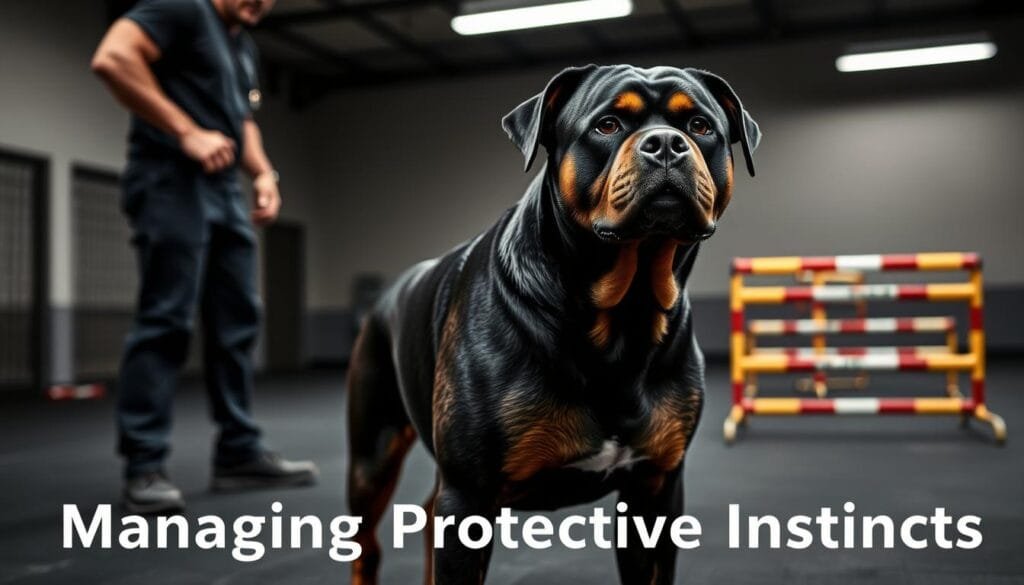
Rottweilers have remarkable protective instincts that need careful management through structured training. These dogs naturally develop strong guardian behaviours. This can be both beneficial and challenging for owners.
It’s essential to understand the difference between watchfulness and aggression in Rottweilers. Our method aims to channel these instincts positively. This way, your Rottweiler becomes a reliable companion, not a threat.
- Recognise natural protective behaviours
- Distinguish between genuine threats and normal interactions
- Develop controlled response mechanisms
- Establish clear communication boundaries
Early socialisation is key in managing your Rottweiler’s protective instincts. By exposing your dog to various environments and experiences during their critical development, you can reduce aggressive tendencies.
A well-trained Rottweiler should be a deterrent to threats, not a danger to innocent bystanders.
Professional training uses positive reinforcement and consistent commands. This method helps your Rottweiler learn to differentiate between real dangers and everyday situations. It creates a balanced and controlled guardian dog.
Remember, successful protection training requires patience, understanding, and a commitment to ongoing education and practice.
Exercise and Mental Stimulation Requirements
Rottweilers are powerful, energetic dogs that demand comprehensive physical and mental engagement. Our Rothweiler training approach recognises that these magnificent canines require structured exercise and stimulation to maintain optimal health and prevent problematic behaviours.
Understanding your Rottweiler’s exercise needs is crucial for successful rottweiler behaviour modification. These robust dogs typically require 1-2 hours of daily physical activity to stay fit and mentally balanced.
Physical Exercise Needs
Rottweilers grow to impressive sizes, ranging from 56-69 cm in height and weighing between 35-60 kg. Their substantial build demands consistent, varied exercise routines:
- Two substantial walks daily
- Structured play sessions
- Strength-building activities
- Interactive games that challenge both body and mind
Mental Enrichment Activities
Intelligent and driven, Rottweilers require mental stimulation to prevent boredom. Our training strategies include:
- Puzzle toys that challenge problem-solving skills
- Scent work and tracking exercises
- Obedience training integrated with play
- Short, engaging training sessions
Structured Play Sessions
Effective Rothweiler training incorporates play that simultaneously exercises and educates. We recommend activities that:
- Reinforce training commands
- Build trust between dog and owner
- Provide physical and mental challenges
- Prevent potential behavioural issues
Remember, a well-exercised Rottweiler is typically a well-behaved companion. By investing time in comprehensive physical and mental stimulation, you’ll develop a stronger, more balanced relationship with your remarkable dog.
Behaviour Modification Strategies

Understanding rottweiler behaviour modification is key to a harmonious relationship with your powerful companion. Dogs that receive positive reward-based training show a 75% improvement in behavioural issues. This makes consistent training essential for managing potential challenges.
Effective rottweiler aggression control starts with identifying the root causes of problematic behaviours. Research shows that many behavioural issues come from:
- Lack of mental stimulation
- Insufficient exercise
- Inconsistent training approaches
- Unintentional reinforcement of negative behaviours
Our approach to behaviour modification centres on positive reinforcement techniques. About 55% of dog owners unintentionally reward bad behaviours by giving attention during misbehaviour. We suggest a structured training strategy that redirects and rewards desired actions.
Key strategies for successful rottweiler behaviour modification include:
- Consistent command training
- Positive reinforcement techniques
- Regular exercise and mental stimulation
- Gradual desensitisation to triggers
Patience is the cornerstone of effective behaviour modification. Change takes time, but with dedication, you can transform challenging behaviours.
Statistics reveal that consistent training can reduce unwanted behaviours by up to 50%. By understanding your Rottweiler’s unique needs and implementing targeted behaviour modification strategies, you’ll create a well-adjusted, confident companion.
Professional Training Support in Ireland
Securing the right support for Rothweiler training can significantly enhance your Rottweiler’s learning experience. Professional obedience training for Rottweilers necessitates a deep understanding of the breed’s distinct traits.
Activk9s dog training delivers comprehensive training solutions, crafted with Rottweiler owners in Ireland in mind. With a proven track record in professional dog training, they offer bespoke programmes. These are designed to meet the specific needs of this extraordinary breed.
Meet Trainer Malcolm
Malcolm is a standout figure in Rottweiler training, with a wealth of experience. His approach is focused on:
- Personalised training strategies
- Understanding Rottweiler temperament
- Developing strong owner-dog relationships
Activk9s Training Programme Details
Their training programme is a valuable resource for Rottweiler owners, offering comprehensive support:
| Programme Feature |
Details |
| Training Coverage |
Nationwide across Ireland |
| Age Range |
Puppies 8 weeks to 14 months |
| Session Availability |
Monday to Sunday, 9:00 AM – 8:00 PM |
| Special Offer |
75% discount on first training materials |
Ready to begin your Rottweiler’s training journey? Contact Malcolm directly at 089-4120124 to explore how professional training can foster a well-behaved, confident companion.
Common Training Challenges and Solutions
Training a Rottweiler comes with its own set of challenges. It requires patience, consistency, and a deep understanding of their nature. To modify their behaviour, a strategic approach is essential, considering their powerful physique and strong will.
The main obstacles in training Rottweilers often arise from their protective instincts and natural guardian traits. To control aggression, it’s vital to grasp the breed’s inherent characteristics. Then, implement specific training methods tailored to their needs.
- Managing stubborn behaviour through consistent leadership
- Addressing overprotective tendencies
- Controlling high-energy responses
- Redirecting intense guarding instincts
Our training method employs positive reinforcement to harness their natural strengths. We suggest:
- Early socialisation to reduce aggressive responses
- Structured training sessions
- Reward-based learning techniques
- Professional guidance when needed
It’s essential to understand your Rottweiler’s psychological needs. Patience and consistent training can turn potential challenges into opportunities for a strong, trusting bond.
Effective training is about communication, not confrontation.
| Challenge |
Solution Strategy |
| Territorial Behaviour |
Structured socialisation and boundary training |
| Excessive Barking |
Positive reinforcement and command redirection |
| Leash Pulling |
Loose-lead walking techniques |
Ongoing Training and Development
Rothweiler training is a lifelong journey that continues well beyond initial obedience training for rottweilers. As your canine companion matures, their learning potential remains strong and vibrant. Maintaining mental stimulation and consistent training becomes crucial for their overall development and happiness.
Our approach to ongoing training focuses on several key strategies:
- Continual mental challenges
- Regular skill reinforcement
- Age-appropriate activities
- Adaptive training techniques
Intelligent breeds like Rottweilers require consistent engagement to prevent boredom and maintain their remarkable cognitive abilities. Structured training sessions become increasingly sophisticated as your dog grows, introducing more complex commands and nuanced behavioural expectations.
Consider implementing these advanced training methods:
- Advanced obedience drills
- Scent work challenges
- Agility training
- Interactive puzzle activities
| Age Range |
Training Focus |
Recommended Activities |
| 1-2 years |
Advanced Commands |
Distance control, off-leash reliability |
| 2-4 years |
Refinement |
Complex task learning, specialised skills |
| 4+ years |
Maintenance |
Cognitive stimulation, gentle challenges |
Remember that your Rottweiler’s desire to learn never diminishes. By providing consistent, engaging training experiences, you’ll strengthen your bond and ensure a well-adjusted, mentally sharp companion throughout their life.
Conclusion
Rottweiler puppy training is a journey filled with dedication, patience, and understanding. The best time to begin training is between 6 weeks and 6 months. This period is crucial for developing a well-adjusted companion. It’s important to remember that these intelligent dogs learn best through consistent, positive reinforcement.
Our comprehensive guide has given you the tools to raise a confident, obedient Rottweiler. Early socialisation and structured training sessions are key. By dedicating just 10-20 minutes daily, you can turn your energetic puppy into a disciplined, loving family member. They will understand boundaries and respond to commands effectively.
The success of rottweiler puppy training hinges on building a strong bond. This bond is based on mutual respect and trust. Professional trainers suggest that experienced handlers provide structured guidance and consistent leadership. View each training moment as a chance to strengthen your bond and unlock your Rottweiler’s incredible potential.
With the right commitment and approach, your Rottweiler will become more than just a pet. They will be a loyal, protective companion who brings joy and security to your Irish home. Your training journey begins now. Approach it with enthusiasm and patience.
FAQ
At what age should I start training my Rottweiler puppy?
Begin training your Rottweiler puppy at 8 weeks old. This period is critical for laying down the groundwork in obedience and socialisation. Use positive reinforcement and keep training sessions brief, engaging, and enjoyable.
How long does it take to train a Rottweiler?
Training a Rottweiler is a continuous process. Basic obedience can be achieved in 4-6 months. Yet, ongoing training and mental stimulation are vital for their entire life. Consistency, patience, and positive reinforcement are essential for a well-behaved Rottweiler.
Are Rottweilers difficult to train?
Rottweilers are intelligent and eager to please, making them highly trainable. They can, though, be stubborn and need a firm, consistent approach. Positive reinforcement, clear leadership, and understanding their breed characteristics will enhance training effectiveness.
How do I handle my Rottweiler’s protective instincts?
Manage your Rottweiler’s protective instincts through proper socialisation and training. Teach them to differentiate between real threats and everyday situations. Use controlled exposure to various people and environments, and reinforce calm, controlled responses to potential triggers.
What type of training equipment do I need for my Rottweiler?
Essential training equipment includes a well-fitted harness, a sturdy lead, engaging toys, and treat pouches for positive reinforcement. Opt for high-quality, durable equipment that can withstand a Rottweiler’s strength and supports effective training techniques.
How much exercise does a Rottweiler need?
Rottweilers need significant physical and mental stimulation. Aim for at least 1-2 hours of exercise daily, including walks, play sessions, and training activities. Combine physical exercise with mental enrichment to prevent boredom and reduce the likelihood of behavioural issues.
Can I train an adult Rottweiler?
Yes, adult Rottweilers can be trained effectively. It may require more time and patience than training a puppy, but consistent positive reinforcement and clear communication can help modify behaviours and teach new skills at any age.
How do I prevent aggression in my Rottweiler?
Prevent aggression through early and ongoing socialisation, positive training methods, and establishing clear leadership. Expose your Rottweiler to various people, animals, and environments from a young age. Address any signs of fear or reactivity immediately and seek professional help if needed.
Source Links

